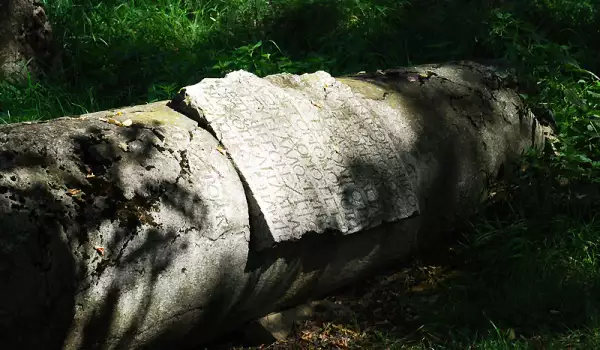Nicopolis ad Istrum

20 km north of the old capital, Veliko Tarnovo, ancient ruins are located in one of the oldest settlements existing in the Bulgarian lands - Nicopolis ad Istrum.
This ancient Roman city is situated on the road between Veliko Turnovo and Ruse, as Nicopolis ad Istrum stands just 3 km southeast of Nikyup. To get to these interesting Roman ruins you should turn immediately left after the bridge on the main road of Veliko Tarnovo - Ruse. After a very short distance you will see Nicopolis ad Istrum on the left bank of the river Rosica.

The history of Nicopolis ad Istrum started after the victory of Emperor Trajan over the Dacians. This triumph was celebrated by the emperor in a spectacular way. He ordered an architect from Damascus, to build a forum in the capital, Rome, named after the Emperor. 40 meters high sasho Trajan column has been a symbol of that victory.
Along with the Forum, Trajan ordered to build several cities in the empire, including several in the Balkans. One such city is a symbol of victory is Istrum Nicopolis ad. In literal translation, the Latin name translates as, City of Victory to the river. Nicopolis ad Istrum was destroyed after the Hunnish invasion in the region, led by Attila.
Nicopolis ad Istrum was chosen territory near the confluence of the river Yantra Rosica in today's village Nikyup. The foundation of the village was laid in between 106-110. Nicopolis ad Istrum was organized along the lines of other cities in the province of Thrace and the cities of Asia.

The city acted in two important bodies - City Council (bullet) and the National Assembly (demos). The special college of priests took care to maintain the cult of the Roman Emperor and managed the main pagan gods: Zeus, Hera, Athena, Hercules, Asclepius, Mithra, Cybele, etc.
There is ample evidence for the details of occupation of the people who lived in Nicopolis ad Istrum. The city had stonemasons, carpenters, fullers, shoemakers, builders, a veterinarian, a person exercising judiciary, even the imperial choir conductor, etc. Nicopolis ad Istrum was surrounded by a wall.

North of it, and near the White Church, and villages they found remnants of ceramic production centers, meeting the needs of the population in Nicopolis ad Istrum as much of the materials had been exported.
Near the present village was a quarry from which they acquired the valuable material for construction. Nicopolis ad Istrum had the right to mint its own bronze coins. Discovered as a result of archaeological works, the coins depicted deities, fortress walls, public and religious buildings.

If you still walk through the ruins of ancient Nicopolis ad Istrum you can get an idea what they the streets looked like. They were paved with huge stone blocks, sidewalks, street central sewer manholes in with flooring and more, all elements of ancient urban planning. Nicopolis ad Istrum was built on a system known as Hipodamova system, which consists of streets crossing at right angles to follow the winds.
Today in Istrum Nicopolis ad you can still see some well-preserved remains of the Odeon, which is a small theater for chamber music performances, the central city square, called the agora with its colonnade remains from the ring. There are also buildings around the square which has housed the town hall. Revealed are the parts of a large public bath, known as the Roman Baths and many more other premises.
Behind the colonnade in the south and east are located stores. The level of the complex in the town square was higher than the street network, such as was the ancient city of Alexandria.















